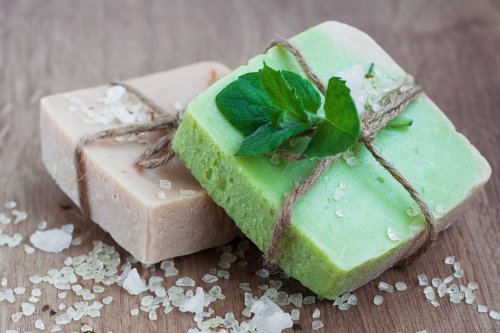Essential Oils, Soap Making
Popular Essential Oils for Soap Making
If you’re getting into soap making at home, chances are you’re already a big fan of evocative scents. The traditional smell of soap is fresh and clean, but it’s much more enjoyable to inject new and exciting smells into your homemade soaps to make them really unique.
Soap making is addictive, to say the least, but it’s a real art and finding the right base recipe is something all soap makers spend a lot of time trying to perfect. After all, a well-made soap can have the ability to provide a host of wellness benefits, from curing acne to helping relieve depression.
So let’s take a closer look at all the ‘notes’ which go into a winning fragrance melody.
Soap-making top notes
These are the immediate scents that make quick, fleeting impacts on the senses. Soap top notes are fresh and short-lived, but no less evocative than the deeper notes.
Popular soap-making top notes include eucalyptus, bergamot, mandarin and lime. Those zingy, tantalising scents which make the mouth water and hit you before deeper scents can start to develop.
Soap-making middle notes
These more subtle, gentler scents take a little longer for the nose to notice. They provide the main ‘body’ of the soap’s overall scent, and can support and connect your top and base notes beautifully. Middle note essential oils are the key ingredient to a well-rounded soap scent.
Typical middle notes include ginger, peppermint, pine, rose and geranium, among many others. Passionate soapmakers enjoy experimenting with these links from the top, fleeting scents of a soap, to the deeper base notes. Which brings us to…
Soap-making base notes
Your base note essential oils are, as they sound, deep and extremely evocative. Essential oils such as frankincense, ylang ylang, cedarwood and patchouli are all very popular base notes, thanks to their rich, heavy smell and long-lasting impression. Base notes take longer to evaporate, and therefore act as a great fixative in your soap-making blend.
Finding your blend
Scents are incredibly personal, and what smells great to one person might not work for the next. The best way to find a soap-making recipe which suits you is to pick your top, middle and base notes carefully and evenly.
You can use a toothpick to find blends which work for you without much wastage. Choose your recipe of notes, then dip your toothpick into each oil to make it pick up the scent. Then you can pick up various toothpicks and hold them closely together under your nose to find a combination that you like. To be certain that you like it, store the toothpicks together in a container and revisit a few days later to make sure it still fits the bill.
But the best advice in making your own soap is to follow what your nose is telling you. You’ll soon be a connoisseur of the finest homemade soap scents, and a far better soap maker as a result!


